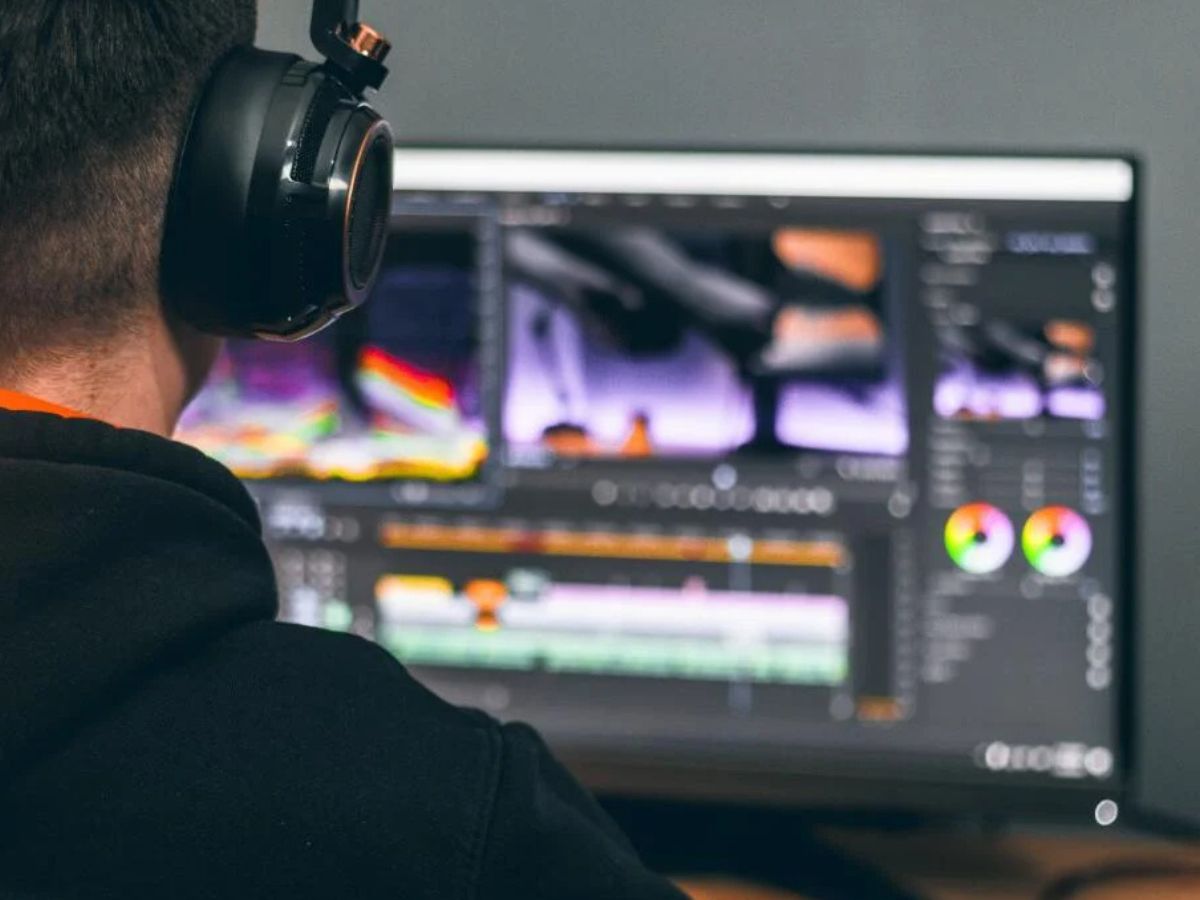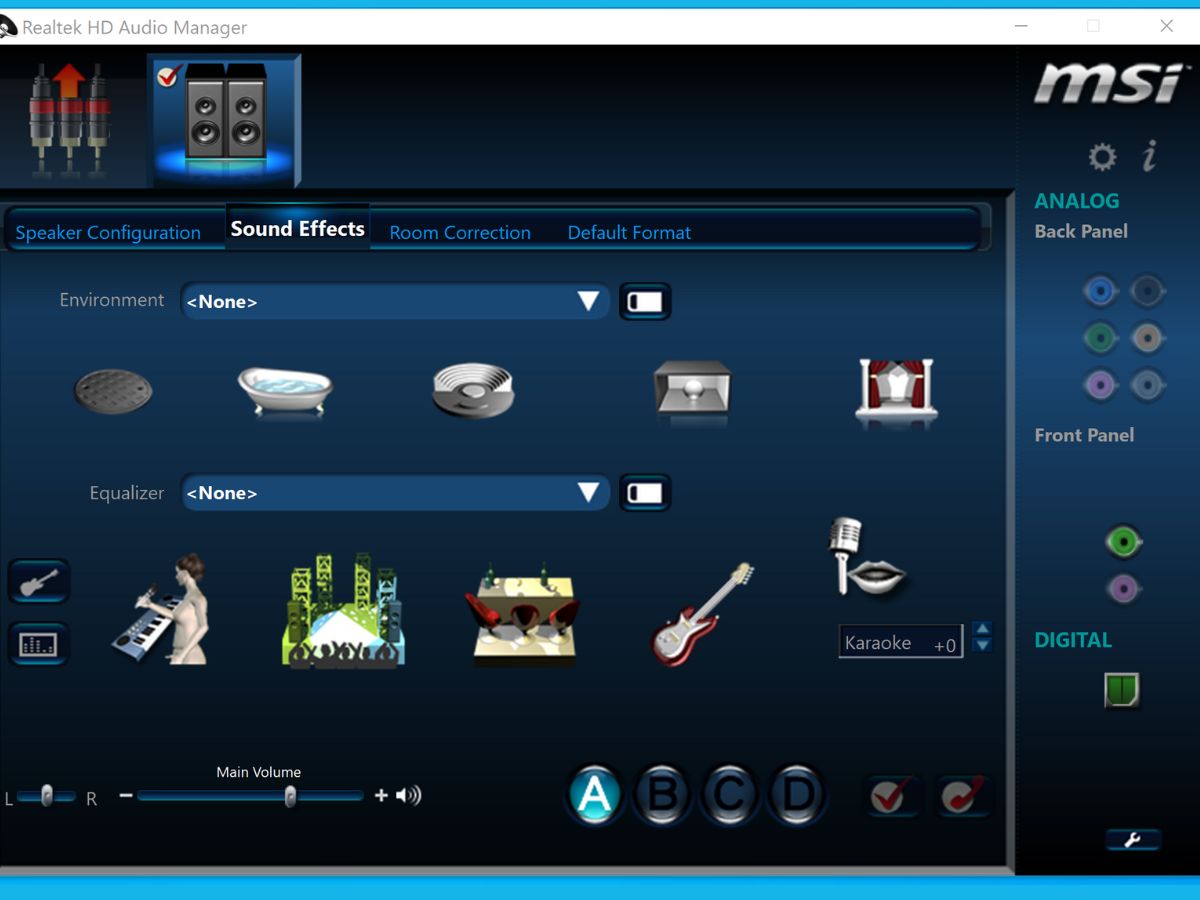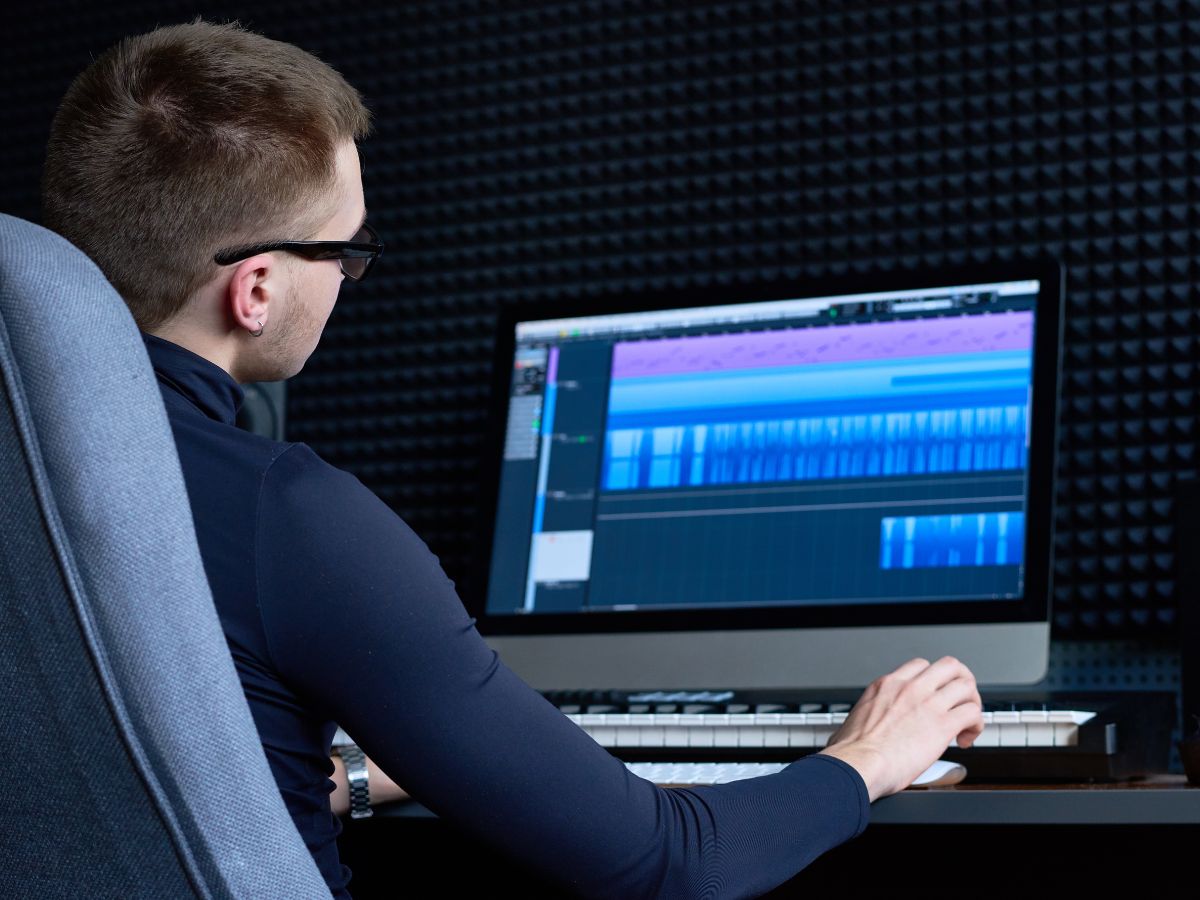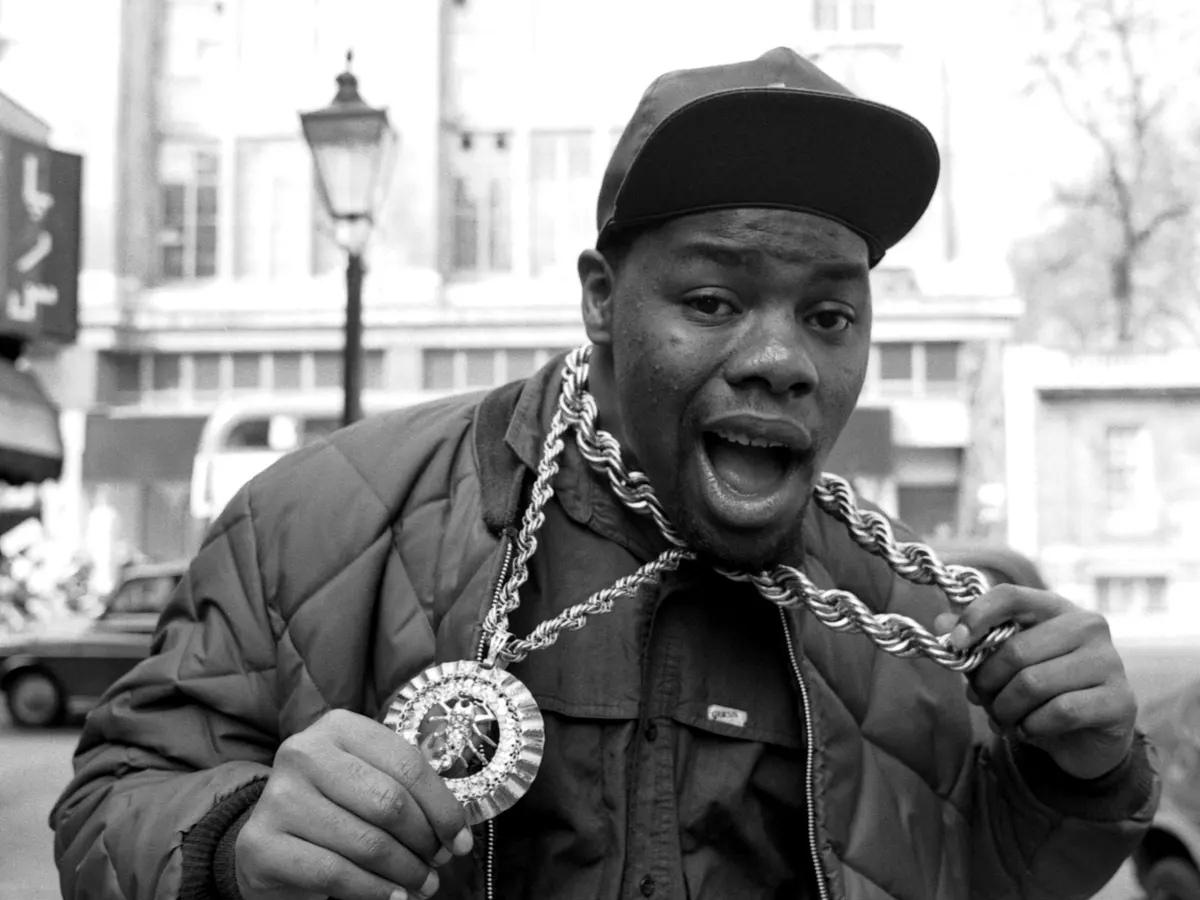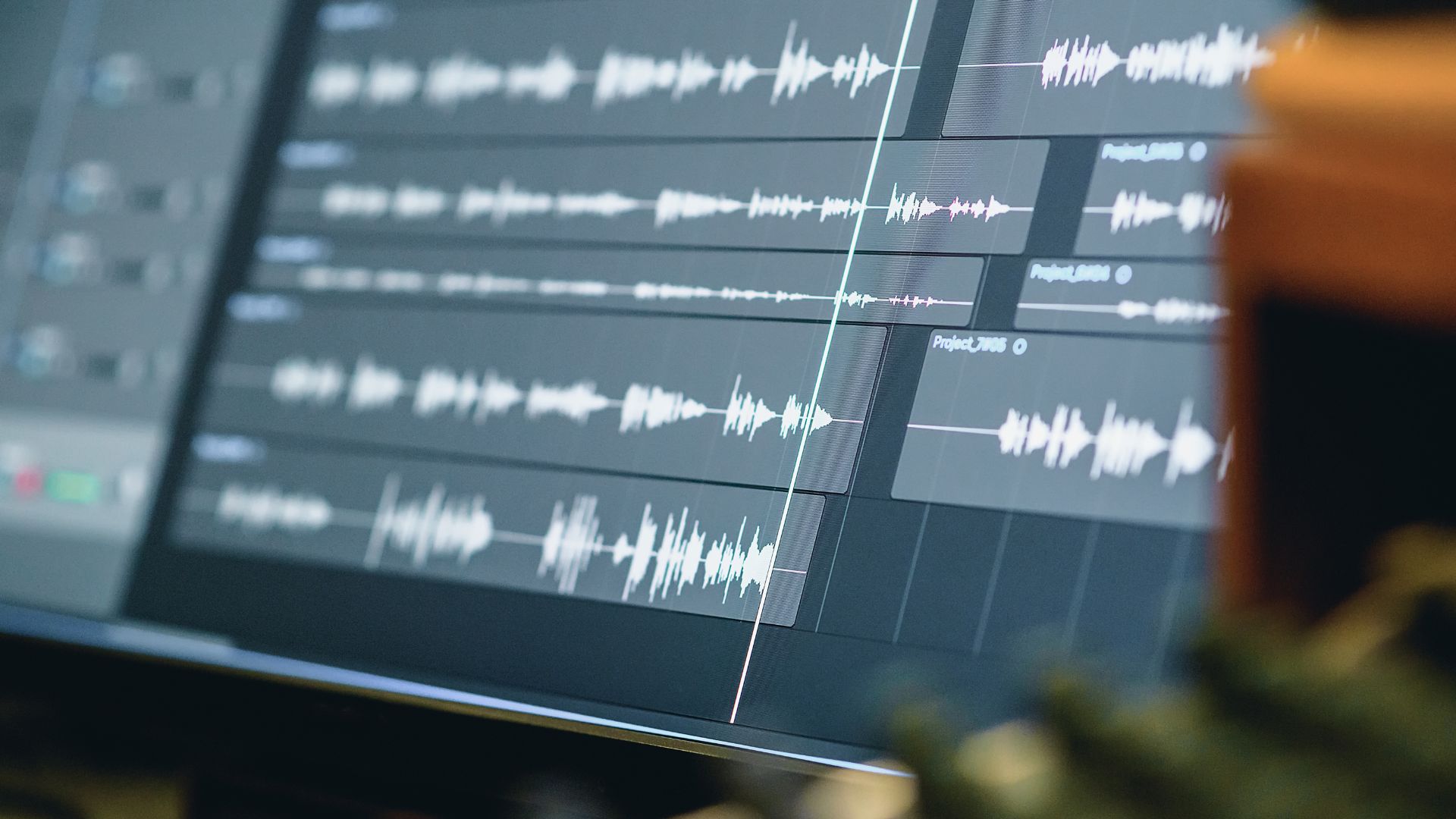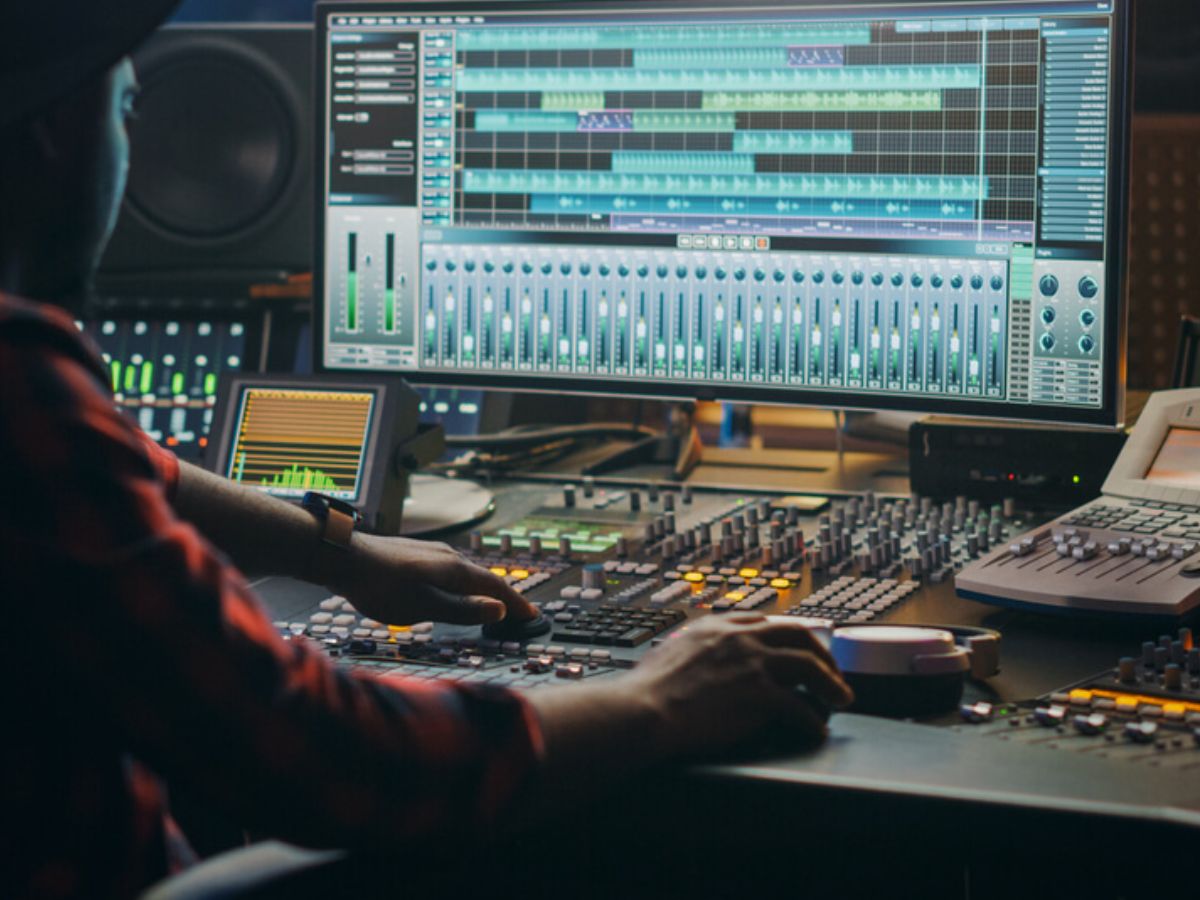Home>Production & Technology>Sound Effects>How To Make Footstep Sound Effects
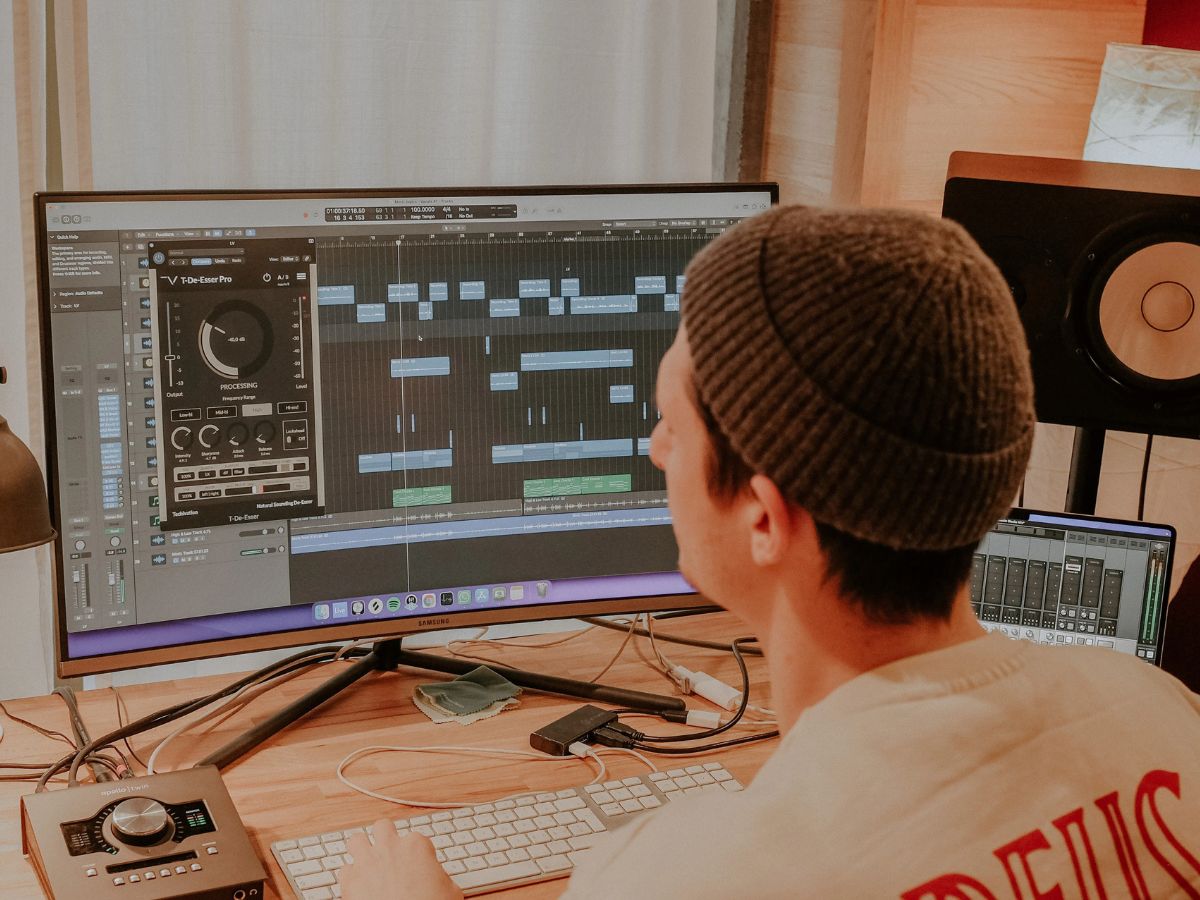

Sound Effects
How To Make Footstep Sound Effects
Published: November 9, 2023
Learn how to create realistic footstep sound effects with this comprehensive guide. Enhance your audio production skills and bring your projects to life with authentic sound effects.
(Many of the links in this article redirect to a specific reviewed product. Your purchase of these products through affiliate links helps to generate commission for AudioLover.com, at no extra cost. Learn more)
Table of Contents
- Introduction
- Types of Footstep Sound Effects
- Creating Footstep Sound Effects
- Equipment Needed for Making Footstep Sound Effects
- Techniques for Recording Footstep Sound Effects
- Editing and Mixing Footstep Sound Effects
- Adding Footstep Sound Effects to Your Projects
- Tips and Tricks for Realistic Footstep Sound Effects
- Conclusion
Introduction
Welcome to the exciting world of Sound Effects! If you have ever watched a movie, played a video game, or even listened to a podcast, you have likely encountered the power of sound effects in creating an immersive experience. And among the vast array of sound effects, one category that often goes unnoticed but plays a crucial role in setting the scene is footstep sound effects.
Footstep sound effects are essential for giving life to any audio or visual project. Whether you are working on a film, animation, video game, or even a theater production, realistic footstep sounds can transport your audience to a different world and evoke a sense of presence and authenticity.
In this article, we will explore the different types of footstep sound effects, how to create them, the equipment needed, techniques for recording, editing and mixing, as well as some tips and tricks for achieving realistic results. Whether you are a sound designer, filmmaker, or simply a sound effects enthusiast, this guide will provide you with the knowledge and tools to enhance your projects with captivating footstep sound effects.
So, put on your headphones, tighten your laces, and let’s dive into the world of footstep sound effects!
Types of Footstep Sound Effects
When it comes to footstep sound effects, there is a wide range of variations depending on the character, surface, and context. Here are some of the most common types of footstep sound effects:
- Barefoot: This type of footstep sound is characterized by the absence of footwear. It can range from soft and stealthy footsteps to heavier, more pronounced sounds.
- Shoes: Footstep sounds caused by shoes can vary greatly depending on the material, style, and condition of the footwear. From sneakers and high heels to boots and sandals, each type of shoe offers a unique sound.
- Boots: Boots are often associated with heavier and louder footstep sounds. Whether it’s military boots, hiking boots, or work boots, the sound they produce can convey a sense of power and authority.
- Barefoot on Different Surfaces: Walking or running barefoot on various surfaces can create distinct footstep sounds. From grass and sand to hardwood floors and concrete, each surface produces its own characteristic sound.
- Heels: High heels are particularly iconic when it comes to footstep sounds. The clicking and tapping of heels on surfaces like tile or pavement can add a touch of elegance and sophistication.
- Specialty Sounds: In addition to the common footstep sounds, there are also specialty sounds that cater to specific scenarios. These can include sound effects like creaking stairs, splashing in water, or crunching snow.
By incorporating a variety of footstep sound effects into your projects, you can create a more dynamic and realistic auditory experience. Whether you are trying to convey a sense of tension, movement, or ambience, choosing the right footstep sound can greatly enhance the overall impact of your work.
Creating Footstep Sound Effects
Creating footstep sound effects can be a fun and creative process. While there are pre-recorded sound effects libraries available, you can achieve more authentic and unique results by recording your own footstep sounds. Here are a few methods to help you create footstep sound effects:
- Performing the Footsteps: The simplest way to create footstep sound effects is by physically performing the footsteps yourself. Use different techniques and variations to match the desired character or surface. You can experiment with different walking styles, speeds, and levels of intensity to add depth and realism.
- Foley Artistry: Foley artists are experts in creating sound effects for films and other media. They use various props and tools to replicate specific sounds. To create footstep sounds, they may use different shoe types on different surfaces to capture the desired effect.
- Utilizing Household Items: Look around your home for objects that can help create unique footstep sounds. For example, walking on cereal or gravel can mimic the sound of walking on a sandy beach. Experiment with different items and surfaces to find interesting sound combinations.
- Sound Libraries: If recording your own sounds is not feasible or you require a wider range of footstep sounds, sound libraries can be a valuable resource. There are many professional libraries available online offering a vast selection of footstep sound effects recorded on various surfaces and with different footwear options.
Remember, the key to creating realistic footstep sound effects is in the details. Pay attention to factors such as speed, weight, surface texture, and footwear to capture the essence of the character or environment you are trying to portray.
Once you have recorded or collected the necessary footstep sounds, the next step is to edit and mix them to achieve the desired effect. We will explore this in more detail in the following sections.
Equipment Needed for Making Footstep Sound Effects
Creating high-quality footstep sound effects requires a few essential pieces of equipment to ensure a professional and accurate result. While the specific equipment you need will depend on your budget and recording setup, here are the key items you will typically require:
- Microphone: A good-quality microphone is crucial for capturing clean and clear footstep sound recordings. Dynamic microphones are commonly used for recording footstep sounds due to their ability to handle high sound pressure levels and reduce unwanted background noise.
- Audio Interface: An audio interface is necessary to connect your microphone to your computer or recording device. It converts the analog audio signal from the microphone into a digital format that can be processed and edited.
- Headphones: A pair of closed-back headphones is essential for monitoring your footstep recordings in real-time. They help you detect any noise or issues during the recording process and ensure accurate playback during editing and mixing.
- Pop Filter: While not directly related to footstep sound effects, a pop filter can be useful for reducing plosive sounds (like “p” and “b” sounds) when recording voiceovers or instructions for footstep sequences.
- Portable Recorder: If you plan on recording footstep sounds in different locations or on the go, a portable recorder can be a useful addition to your equipment. They are compact, battery-powered devices that allow you to capture high-quality audio without the need for a computer setup.
- Optional Accessories: Depending on your specific needs and recording techniques, you may also consider additional accessories such as microphone stands, shock mounts, and windshields to further improve the quality and stability of your recordings.
While it’s important to invest in quality equipment, it’s worth noting that you don’t necessarily need high-end or expensive gear to create convincing footstep sound effects. With some creativity and careful consideration, even budget-friendly equipment can yield impressive results.
Remember to familiarize yourself with your equipment and optimize your recording setup to achieve the best possible footstep sound recordings. Taking the time to understand and experiment with your equipment will allow you to capture the subtleties and nuances of different footstep sounds, bringing richness and authenticity to your projects.
Techniques for Recording Footstep Sound Effects
When it comes to recording footstep sound effects, there are several techniques you can employ to capture the most realistic and immersive sounds. Here are some tips to help you achieve high-quality footstep recordings:
- Selecting the Right Location: Choose a location that best suits the specific footstep sounds you are aiming for. Consider the surface types and environments that match your project requirements. For example, if you need the sound of footsteps on gravel, find a gravel path or driveway to record on.
- Preparation: Ensure that the recording area is free from excessive background noise, such as traffic or people talking. It’s also beneficial to minimize echo and reverberation by using sound-absorbing materials like blankets or foam panels.
- Multiple Takes and Variations: Record several takes of each footstep sequence to provide options during the editing process. Vary the speed, intensity, and weight of your footsteps to capture different performances and add depth to your sound library.
- Varying Surfaces: If possible, record footstep sounds on various surfaces to enhance the realism. This includes surfaces like concrete, grass, gravel, wood, and carpet. Experiment with different shoes or no shoes to further diversify your recordings.
- Perspective and Movement: Consider the perspective of the listener and the character’s movement. Recording from different angles and distances can create a sense of depth and movement in your footstep sound effects.
- Use Props: Utilize props and objects to enhance your recordings. For example, carrying a backpack filled with heavy items can add weight and realism to footstep sounds. Experiment with different props and techniques to achieve unique results.
- Sync with Visuals: If you are working on a video project, try to match the footstep sounds with the on-screen action. This synchronization will enhance the realism and make the audience feel more connected to the visuals.
Remember to listen and review your recordings after each take to ensure you have captured the desired footstep sound. Take notes on the characteristics of each recording to help with sorting and organizing during the editing phase.
By using these techniques and paying attention to the details, you can capture authentic footstep sound effects that will elevate the quality and immersion of your audio and visual projects.
Editing and Mixing Footstep Sound Effects
Once you have recorded your footstep sound effects, the next step is to edit and mix them to achieve the desired result. Here are some techniques and considerations for editing and mixing footstep sound effects:
- Clean Up the Recordings: Start by listening to each footstep recording and removing any unwanted noise or artifacts. This can include background noise, clicks, pops, or uneven volume levels. Use audio editing software to perform precise edits and clean up the recordings.
- Trim and Arrange: Trim each footstep recording to eliminate any unwanted silence or extra noise before and after the footstep sound. Arrange the footstep sequences in a way that best matches the desired rhythm and cadence of the movement.
- Layering: Layering is a common technique in sound design that involves combining multiple footstep recordings to create a fuller and more realistic sound. Experiment with layering different variations and adjusting the volume levels to achieve the perfect blend.
- EQ and Filtering: Use equalization (EQ) to adjust the frequency balance of your footstep sound effects. This can help accentuate certain characteristics and make them stand out in the mix. Additionally, consider using filtering techniques to mimic the specific sonic qualities of different surfaces or shoe types.
- Panning and Spatial Placement: Utilize panning techniques to position the footstep sound effects in the stereo field. This can create a sense of movement and immersion by placing footsteps in specific locations. Additionally, consider using spatial plugins or techniques to add depth and realism, simulating the environment in which the footsteps are occurring.
- Dynamic Processing: Apply dynamic processing techniques such as compression or volume automation to ensure a consistent and balanced sound throughout the footstep sequences. This can help reduce any sudden spikes in volume and provide a smoother listening experience.
- Reverb and Ambience: Adding a touch of reverb or ambience to your footstep sound effects can help create a sense of space and environment. Experiment with different reverberation settings and consider the characteristics of the scene or location where the footsteps are occurring.
- Test and Adjust: Continuously listen to your edited footstep sound effects in the context of your project and make adjustments as needed. Ensure that the footstep sounds blend seamlessly with the visuals and enhance the overall storytelling.
Remember, the goal of editing and mixing footstep sound effects is to create a cohesive and realistic auditory experience. By using these techniques and considering the specific requirements of your project, you can elevate the impact of your footstep sound effects and bring your audio and visual creations to life.
Adding Footstep Sound Effects to Your Projects
Now that you have created and edited your footstep sound effects, it’s time to integrate them into your projects. Whether you’re working on a film, animation, video game, or any other audiovisual production, here are some tips for adding footstep sound effects effectively:
- Sync with Visual Cues: Pay close attention to the timing and synchronization of the footstep sound effects with the on-screen action. Ensure that each footstep matches the footsteps of the character or the movement in your project. This synchronization helps create a seamless and immersive experience.
- Layering for Realism: Use the technique of layering to add depth and realism to your footstep sound effects. By combining different footstep recordings, with varying intensities, speeds, or surfaces, you can create a more dynamic and believable sound.
- Consider Perspective: Depending on the shot or scene, the perspective of the listener may change. Adjust the panning or spatial placement of the footstep sound effects accordingly to enhance the sense of realism and create a more immersive experience.
- Use Sound Transitions: Smoothly transition between different footstep sounds when the character moves from one surface to another. Blend the sounds together or use crossfade techniques to avoid abrupt changes that might jar the listener out of the experience.
- Emphasize Key Moments: Highlight important moments or actions by emphasizing the corresponding footstep sounds. This can be done by boosting the volume or adding subtle effects to draw attention to significant movements in your project.
- Create Rhythmic Patterns: Consider the rhythm and cadence of your footstep sound effects to match the pace and energy of the scene. This can help create a sense of momentum or tension, enhancing the overall impact of the project.
- Blend with Background Ambience: Ensure that the footstep sound effects blend seamlessly with any background ambience or other sound elements in your project. This helps to create a cohesive and immersive auditory experience.
- Test and Adjust: Continuously listen to the footstep sound effects within the context of your project and make any necessary adjustments. Ensure that they enhance the storytelling and contribute to the overall mood and atmosphere of your production.
Adding footstep sound effects requires creativity and careful consideration of the project’s specific requirements. By implementing these tips and techniques, you can elevate the audio experience and transport your audience into the world you have created.
Tips and Tricks for Realistic Footstep Sound Effects
Creating realistic footstep sound effects involves attention to detail and a deep understanding of the desired character or environment. Here are some tips and tricks to help you achieve authenticity in your footstep sound effects:
- Research and Observation: Study the movement and behavior of the characters or subjects you are trying to replicate. Pay attention to their weight distribution, walking styles, and the surfaces they walk on. This will help you accurately mimic their footsteps.
- Vary Intensity and Weight: Consider the weight and intensity of each footstep. A light, careful step will sound different from a heavy, forceful one. Varying the weight and intensity of footstep sound effects can bring a sense of realism to the audio.
- Consider Footwear: Different types of footwear produce distinct sounds. Pay attention to the type of shoes or the absence of shoes that your character or subject is wearing. Capture the unique characteristics of each type of footwear when recording or selecting footstep sound effects.
- Match the Surface: The sound of footsteps changes depending on the surface being walked on. Experiment with recording or selecting footstep sound effects that match the specific surfaces – whether it’s concrete, carpet, grass, or sand. The right surface sound can greatly enhance the realism of your project.
- Creatively Use Props: Consider incorporating props to enhance the realism of your footstep sound effects. For example, using cornstarch or flour to simulate walking on snow, or breaking celery or potato chips to mimic the sound of stepping on twigs or leaves. Be creative and experiment with different ideas.
- Add Micro Details: Pay attention to micro details to elevate the authenticity of your footstep sound effects. Add subtle sounds like shoe squeaks, scuffs, or slight variations in footstep pitches to mimic the natural nuances of walking.
- Record in Different Environments: Capture footstep sound effects in various real-world environments to expand your sound library. Recording in different locations will provide you with a wider range of realistic footstep sounds to use in your projects.
- Collaborate with Foley Artists: Consider collaborating with foley artists who specialize in creating sound effects. Their expertise and experience can bring a new level of realism to your footstep sound effects through the use of props, creative techniques, and professional recording setups.
- Seek Feedback and Iterate: Always seek feedback from others, such as fellow sound designers or directors, to ensure that your footstep sound effects align with the intended vision of the project. Iterate and make adjustments as needed to achieve the desired result.
Remember, the key to realistic footstep sound effects lies in capturing the small details, understanding the context of the scene, and using your creativity to add that extra touch of authenticity. By applying these tips and tricks, you can create footstep sound effects that transport your audience into the world of your project.
Conclusion
Captivating footstep sound effects can truly elevate the quality and immersive experience of any audiovisual project. By understanding the different types of footstep sounds, using the right techniques for recording, and applying effective editing and mixing strategies, you can create realistic and authentic footstep sound effects that bring your projects to life.
Whether you’re a sound designer, filmmaker, game developer, or simply an enthusiast, this guide has provided you with the knowledge and tools to enhance your projects with captivating footstep sound effects. From performing the footsteps yourself to utilizing household items or collaborating with foley artists, there are various methods to create unique and realistic footstep sound effects.
Remember to pay attention to details such as surface types, footwear, perspective, and syncing with visuals. Layering, EQ, panning, and dynamic processing techniques can all contribute to a more immersive and engaging audio experience. Use your creativity and experimentation to add depth and realism to your footstep sound effects.
Lastly, seek feedback and iterate on your work. Continuously refine and improve your footstep sound effects to ensure they align with the vision and storytelling of your projects.
So, put on your headphones, step onto different surfaces, and let your imagination and expertise guide you in creating the perfect footstep sound effects. Your audience will thank you for the immersive and realistic audio experience that enhances their enjoyment and connection with your projects.

